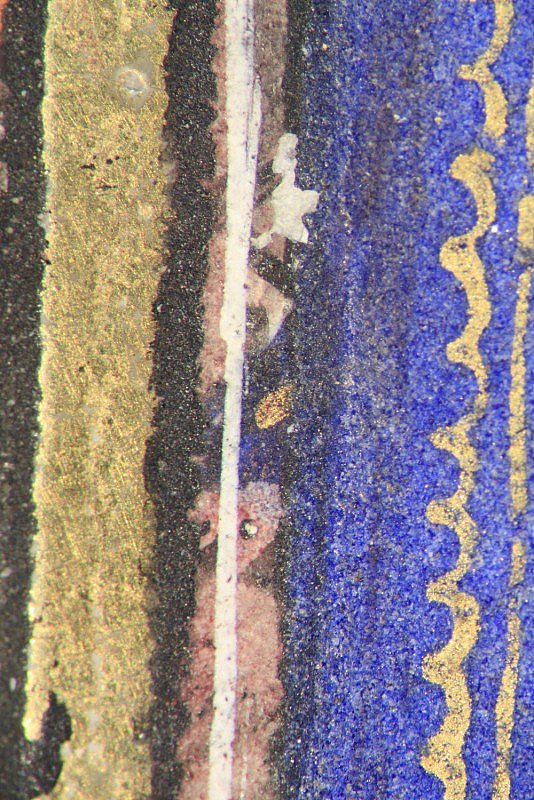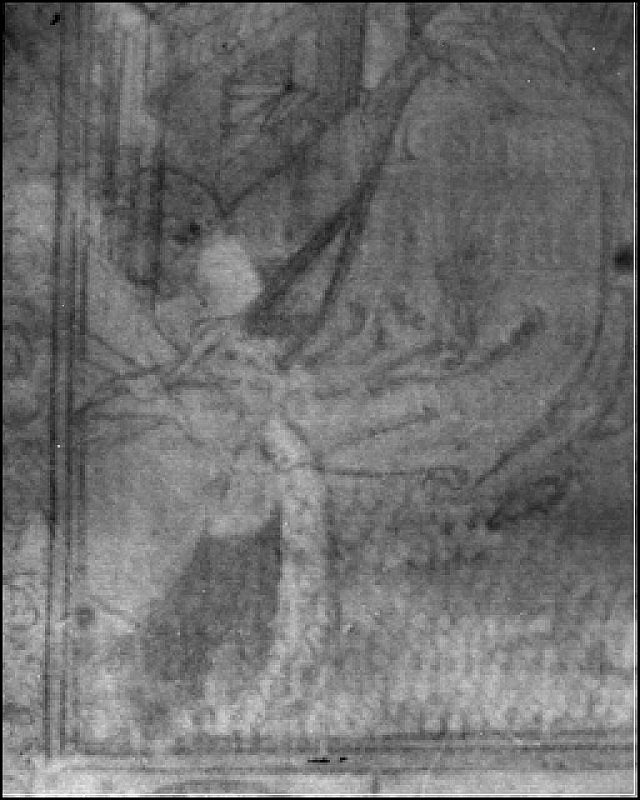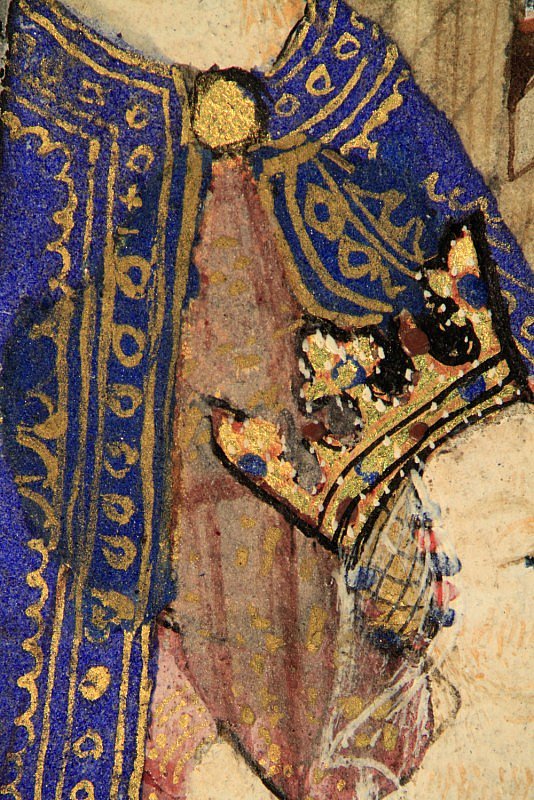Nantes Artists
Artists
Two Breton illuminators amended and expanded the imagery.
In 1442, an artist working in Nantes for Francis I of Brittany painted the portrait of Isabella Stuart over that of the original owner on fol. 20r. The image was adapted in two stages. Around the same time Isabella’s arms were added to the borders on fol. 20r and throughout the volume. Another Breton illuminator painted a new miniature including the image of Margaret of Brittany for the prayer added c. 1455 on fol. 28r.



The Virgin and Child with a patron (prayer Obsecro te)
The marginal scene showing Christ’s encounter with the devil belongs to the cycle illustrating the Pilgrimage of Jesus Christ. The arms of Isabella Stuart have been added to the border. Her portrait was painted over that of the original patron kneeling before the Virgin and Child. The overpainting was done in two stages. During the first stage Isabella’s face and heraldic dress were painted over the original ones, and the figure of St Catherine was added (hotspots 1 and 2). The red of Isabella’s ermine-lined coat (cotte) is the same pigment, vermilion, as that used for her arms in the border, while the original red elsewhere on the page – in the main image, the marginal miniature and the floral border – is red lead. St Catherine’s garments were painted in insect-based organic pink and ultramarine blue, except the darker, oval area behind Isabella’s head which was painted in azurite instead. It conceals the head dress of the original patron, which Isabella retained at first. During the second stage of overpainting, the head dress was covered with azurite and Isabella’s ducal coronet was painted over it (hotspot 3). The latter change is clearly visible in the near-infrared image (see Infrared Layer).
The alterations were most probably commissioned by Isabella’s husband-to-be, Francis I of Brittany. The first step – the overpainting of what was probably the portrait of his first wife, Yolande of Anjou, and the addition of St Catherine and of Isabella’s arms – would have been prompted by preparations for Francis’ wedding to Isabella on 29 October 1442. On 29 August 1442, Francis succeeded to the duchy of Brittany and Isabella’s coronet must have been added after that point, since she would have become a duchess upon her marriage two months later.
Related content: The Hours of Isabella Stuart
Related content: Lab
- Overview of Artists' Materials: Azurite
- Overview of Artists' Materials: Cinnabar and Vermilion
- Overview of Artists' Materials: Minium and Red lead
- Overview of Artists' Materials: Ultramarine
- Analytical Methods: Infrared reflectography
- Analytical Methods: Near-infrared imaging
- Analytical Methods: Optical microscopy
- Overview of Artists' Techniques: Underdrawing
